Table of Contents
- Fostering Innovation
- Attracting Talent
- Boosting Employee Morale
- Compliance and Legal Requirements
- Screen Readers
- Braille Displays
- Closed Captions and Subtitles
- Voice Recognition Software
- Keyboard Shortcuts and Alternative Input Devices
- Collaboration and Communication Platforms
- Flexible Workspace Design
- Training and Awareness Programs
- Mental Health Support Tools
- Diversity and Inclusion Software
- The Future of Accessibility and Inclusivity
- AI-Powered Accessibility
- Virtual Reality for Training
- Enhanced Assistive Devices
- Global Collaboration
In today’s modern workplace, diversity and inclusion are not just buzzwords; they are essential pillars of a thriving, forward-thinking organization. To support employees of all backgrounds, abilities and needs, creating an accessible and inclusive office environment is paramount. In this article, we’ll explore the significance of accessibility and inclusivity in the workplace and highlight the tools and technologies that facilitate a diverse and welcoming office atmosphere.
In today’s rapidly evolving workplace landscape, diversity and inclusion have transcended the realm of mere buzzwords to become integral pillars of any progressive and successful organization. Embracing and championing diversity extends beyond rhetoric; it entails fostering a culture of equality and respect where every employee, regardless of their background, abilities or unique needs, feels valued and empowered. This is why the pursuit of an accessible and inclusive office environment has become not just a priority but a fundamental imperative for businesses. Let’s delve deeper into the profound significance of accessibility and inclusivity in the workplace and explore the transformative tools and technologies that make this vision a reality.
Employee Well-Being: An inclusive workplace is a healthy workplace. When employees feel that their identities and backgrounds are respected, they experience higher levels of job satisfaction and well-being. This, in turn, leads to increased productivity and lower turnover rates, ultimately benefiting the organization.
Talent Attraction and Retention: A commitment to diversity and inclusion is a magnet for top talent. Talented professionals are drawn to organizations that not only acknowledge diversity but actively seek it out and provide an inclusive environment. Moreover, inclusive workplaces tend to retain talent more effectively, as employees are more likely to stay with organizations that prioritize their well-being and growth.
Innovation and Creativity: Diverse teams bring a wealth of perspectives and experiences to the table, fostering creativity and innovation. Inclusivity encourages employees to share their unique insights and ideas, leading to the development of groundbreaking solutions and approaches.
Market Responsiveness: A diverse and inclusive workforce better reflects the diversity of customers and clients. This makes it easier for organizations to understand market nuances and cater to the needs of a broad customer base, ultimately driving business growth and competitiveness.
Legal and Ethical Compliance: Legal and ethical considerations play a significant role in the push for diversity and inclusion. Many regions have enacted laws and regulations that mandate fair treatment and equal opportunities for all employees. Non-compliance can result in legal repercussions and damage to an organization’s reputation.
Global Reach: In an interconnected world, businesses often operate across borders. An inclusive workplace is better equipped to navigate the complexities of international markets and establish a strong global presence. It can adapt to different cultural norms and perspectives, fostering positive relationships with international partners and clients.
Tools and Technologies: The digital age has introduced a plethora of tools and technologies that facilitate accessibility and inclusivity. From screen readers and adaptive software to accessible web design and assistive devices, these tools bridge the gap for employees with disabilities, ensuring they can fully participate in the workplace.
Training and Education: Online training platforms and e-learning resources enable organizations to provide comprehensive diversity and inclusion training to employees. These programs help raise awareness, foster empathy and equip staff with the knowledge and skills to create an inclusive environment.
Flexible Work Arrangements: Technology has enabled flexible work arrangements, such as remote work and flexible hours, making it easier for employees with various needs and responsibilities to balance work and personal life. These arrangements contribute to a more inclusive workplace by accommodating diverse lifestyles.
Continuous Improvement: The commitment to accessibility and inclusivity is an ongoing journey. Organizations can utilize data analytics and feedback mechanisms to continually assess their progress and identify areas for improvement, ensuring that their workplace remains truly inclusive and reflective of evolving employee needs.
In conclusion, accessibility and inclusivity are not merely ethical ideals; they are strategic imperatives that drive organizational success. In today’s dynamic business landscape, where talent, innovation and adaptability are paramount, fostering a diverse and inclusive workplace is the key to staying ahead of the curve. By leveraging the tools and technologies available and embracing a culture of respect and equality, organizations can create an environment where every individual thrives, ultimately leading to enhanced productivity, innovation and resilience in the face of change.
For a comprehensive look at this subject, we invite you to read more on this dedicated page: Introduction to the Human Resources Discipline of Diversity, Equity …
Fostering Innovation
Diverse teams, including individuals with varying abilities, bring unique perspectives and insights to the table. This diversity can lead to more innovative solutions and creative problem-solving.
Diverse teams are like a tapestry woven from different threads, each contributing its own unique color and texture. These teams encompass individuals with varying abilities, backgrounds, experiences and viewpoints and they possess the power to drive innovation and foster creative problem-solving in remarkable ways. Here’s an extended look at the profound impact of diversity in teams:
Multifaceted Perspectives: When you assemble a diverse team, you bring together people with multifaceted perspectives. Each individual sees the world through their own lens, shaped by their experiences, culture and abilities. This wealth of viewpoints allows the team to approach challenges from multiple angles, uncovering hidden opportunities and potential solutions that a homogenous team might overlook.
Cultural Insights: Diversity extends beyond visible differences; it encompasses cultural diversity as well. Team members from various cultural backgrounds can provide invaluable insights into different markets, customer preferences and global trends. This knowledge can be instrumental in making products or services more inclusive and market-savvy.
Enhanced Problem-Solving: The amalgamation of diverse perspectives often leads to more robust problem-solving. Teams can draw on a wider range of skills, knowledge and experiences to address complex issues. This not only accelerates the problem-solving process but also increases the likelihood of finding innovative solutions that stand out in the market.
Improved Creativity: Diversity fuels creativity. When people with different abilities collaborate, they challenge each other’s thinking and encourage the generation of new ideas. The synergy between various talents and backgrounds can spark innovation and inspire out-of-the-box thinking.
Enhanced Product Development: In the realm of product development, diversity can be a game-changer. Designing products that cater to individuals with varying abilities requires input from team members who understand and empathize with diverse user needs. This results in products that are more inclusive and user-friendly.
Broader Market Reach: A diverse team can help businesses tap into broader market segments. By understanding the needs and preferences of various demographic groups, companies can develop marketing strategies and products that resonate with a wider audience, driving growth and market expansion.
Cohesion and Empathy: Working in a diverse team fosters cohesion and empathy. Team members learn to appreciate each other’s strengths and challenges, creating a supportive and inclusive work environment. This, in turn, boosts morale and team satisfaction, leading to higher productivity and retention rates.
Social Responsibility and Ethics: Embracing diversity is not only a strategic advantage but also a social responsibility. Companies that prioritize diversity and inclusion send a powerful message about their commitment to ethical practices and equal opportunities, enhancing their reputation and stakeholder trust.
Legal and Regulatory Compliance: In many regions, there are legal and regulatory requirements related to diversity and inclusion. A diverse team helps organizations meet these compliance obligations, avoiding potential legal issues and associated costs.
In summary, diverse teams are a wellspring of creativity, innovation and problem-solving prowess. By harnessing the collective power of individuals with varying abilities, backgrounds and perspectives, organizations can achieve remarkable results and position themselves for long-term success in an increasingly diverse and interconnected world. Embracing diversity is not just a smart business move; it’s a testament to the transformative potential of inclusivity.
For a comprehensive look at this subject, we invite you to read more on this dedicated page: How to promote diversity, equity, and inclusion in the workplace
Attracting Talent
Organizations that prioritize inclusivity are often more attractive to top talent. Inclusive workplaces are seen as forward-thinking, supportive and appealing to a broader pool of candidates.
Organizations that make inclusivity a core value and prioritize creating inclusive workplaces tend to enjoy a competitive advantage when it comes to attracting and retaining top talent. In today’s diverse and interconnected world, inclusivity isn’t just a buzzword but a fundamental aspect of company culture that resonates with both current and prospective employees.
Inclusive workplaces are perceived as forward-thinking, as they acknowledge and embrace the rich tapestry of backgrounds, perspectives and experiences that each employee brings to the table. This sends a clear message that the organization values diversity and is committed to fostering an environment where everyone feels respected and heard.
This commitment to inclusivity also translates into tangible support for employees. Inclusive organizations invest in diversity training, mentorship programs and affinity groups, among other initiatives. These efforts not only create a sense of belonging but also empower employees to reach their full potential, knowing that they have the backing of an inclusive community.
Moreover, inclusive workplaces inherently appeal to a broader and more diverse pool of candidates. When job seekers see that a company champions diversity and inclusion, they are more likely to consider it as a prospective employer. This expanded candidate pool often includes individuals from various backgrounds, skill sets and experiences, which can bring fresh perspectives and innovative ideas to the organization.
In the end, prioritizing inclusivity isn’t just a moral imperative; it’s a strategic advantage. It enhances a company’s reputation, helps it attract top talent and fosters a positive, collaborative and creative work environment. As inclusivity continues to gain importance in the workplace, organizations that lead in this area will find themselves well-positioned in the competitive landscape, reaping the benefits of a diverse and talented workforce.
To delve further into this matter, we encourage you to check out the additional resources provided here: What Is Diversity, Equity and Inclusion (DEI)? | Definition from …

Boosting Employee Morale
When employees feel valued and supported, their job satisfaction and morale increase. Inclusive workplaces contribute to a positive company culture.
Fostering a workplace where employees feel valued and supported isn’t just a nice-to-have; it’s a fundamental building block of a thriving organization. Here’s a more comprehensive exploration of why this approach is essential and how it contributes to a positive company culture:
Enhanced Job Satisfaction: When employees perceive that their contributions matter and are recognized, their job satisfaction soars. They feel that their efforts are making a meaningful impact, which, in turn, leads to higher levels of motivation and engagement.
Increased Morale: High morale is contagious and can significantly impact the overall atmosphere within an organization. When employees feel valued and supported, they are more likely to exhibit a positive attitude, even in challenging situations. This positivity radiates through the workplace, creating a more harmonious and productive environment.
Improved Productivity: A content and motivated workforce tends to be more productive. When employees are satisfied with their jobs, they are inclined to put in their best effort, resulting in increased productivity and efficiency.
Lower Turnover Rates: Inclusive and supportive workplaces often experience lower turnover rates. Employees are less likely to seek opportunities elsewhere when they feel valued and appreciated. This stability saves organizations recruitment and training costs and maintains institutional knowledge.
Enhanced Creativity and Innovation: A positive work environment encourages employees to think creatively and innovatively. When they feel their ideas are welcomed and respected, they are more likely to contribute fresh insights and solutions to challenges.
Stronger Team Cohesion: Inclusivity fosters stronger bonds among team members. When employees collaborate in an environment of mutual respect and support, they develop trust and camaraderie, leading to more effective teamwork and problem-solving.
Diverse Perspectives: Inclusive workplaces often have diverse teams, which bring a wealth of varied perspectives and experiences to the table. This diversity fuels creativity and enables organizations to better adapt to changing market dynamics.
Positive Employer Brand: Organizations known for valuing and supporting their employees build a positive employer brand. This reputation can attract top talent and position the company as an employer of choice in the competitive job market.
Higher Customer Satisfaction: Happy and engaged employees tend to provide better customer service. Their positivity and dedication to their roles translate into improved customer satisfaction, which can be a significant competitive advantage.
Sustainable Growth: A positive company culture rooted in valuing employees contributes to long-term sustainability and growth. It ensures that employees are invested in the organization’s success and are more likely to remain loyal and committed through ups and downs.
In conclusion, creating an inclusive and supportive workplace isn’t just about employee well-being; it’s a strategic imperative. It enhances job satisfaction, morale, productivity and innovation while reducing turnover rates. Such a positive work environment contributes to a thriving company culture, ultimately benefiting the organization’s bottom line and positioning it for sustainable success in a rapidly evolving business landscape.
Looking for more insights? You’ll find them right here in our extended coverage: HR022/HR022: Diversity in the Workplace: Benefits, Challenges …
Compliance and Legal Requirements
Many countries have legislation in place that mandates accessibility and inclusivity in the workplace. Complying with these laws is not only ethical but also a legal obligation.
“Across the globe, numerous countries have enacted legislation designed to promote accessibility and inclusivity in the workplace, reflecting a commitment to equality and fairness. The significance of complying with these laws extends beyond mere ethical considerations; it carries substantial legal weight and imposes a clear obligation on businesses. Here’s a more comprehensive exploration of why adherence to such legislation is imperative:
Legal Obligation: The foremost reason for compliance is the legal obligation itself. Laws mandating workplace accessibility and inclusivity are enshrined in statutes, regulations and employment laws. Businesses are bound by these legal frameworks and failing to comply can lead to severe legal consequences, including fines, penalties and potential litigation.
Equal Opportunity: Workplace accessibility laws are fundamentally rooted in the principle of equal opportunity. They ensure that individuals with disabilities or those belonging to underrepresented groups are provided with fair and equal access to employment, benefits and career advancement. Compliance reinforces a commitment to fostering a level playing field for all employees.
Avoidance of Discrimination: Non-compliance with accessibility and inclusivity laws can expose organizations to charges of discrimination. Discriminatory practices not only tarnish a company’s reputation but can also result in costly lawsuits and settlements. Compliance is a proactive measure to prevent such negative outcomes.
Diverse Workforce: In an increasingly diverse world, businesses benefit from having a workforce that mirrors the diversity of their customer base. Compliance with inclusivity laws encourages the recruitment and retention of employees from various backgrounds, fostering a richer and more innovative work environment.
Enhanced Productivity: Accessible workplaces are often more productive. Accommodations for individuals with disabilities, such as ergonomic workstations, assistive technologies and flexible schedules, can improve overall productivity. Compliance enhances the well-being and efficiency of employees.
Market Access: In some cases, adherence to accessibility and inclusivity laws can open doors to new markets and customers. Businesses that prioritize inclusivity can tap into segments of the population that might otherwise be inaccessible due to barriers or discrimination.
Brand Reputation: Today’s consumers and investors are increasingly conscious of a company’s commitment to social responsibility. Compliance with inclusivity laws enhances a company’s reputation, demonstrating a commitment to diversity, equity and inclusion. This positive image can attract customers and investors who align with these values.
Employee Engagement: An inclusive workplace fosters higher levels of employee engagement and satisfaction. When employees feel valued, supported and included, they are more likely to be motivated and loyal, reducing turnover and recruitment costs.
Innovation: Diverse and inclusive teams often drive innovation. A variety of perspectives and experiences can lead to creative problem-solving and the development of products and services that cater to a broader audience.
Global Business: For companies with a global presence, compliance with accessibility laws is essential for consistency and risk management. Laws and regulations may vary from one country to another and compliance ensures a uniform approach to inclusivity across all operations.
In summary, workplace accessibility and inclusivity legislation is not merely a matter of ethical choice; it is a binding legal obligation with far-reaching implications. Compliance not only mitigates legal risks but also enhances workplace diversity, productivity and reputation. It aligns businesses with the values of equality and inclusion, contributing to a more equitable and prosperous society.”
Additionally, you can find further information on this topic by visiting this page: Accessibility, Usability, and Inclusion | Web Accessibility Initiative …
Screen Readers
Screen reader software converts on-screen text into synthesized speech, enabling individuals with visual impairments to access digital content.
Screen reader software represents a groundbreaking advancement in digital accessibility, as it plays a pivotal role in leveling the playing field for individuals with visual impairments. This technology goes beyond merely converting on-screen text into synthesized speech; it’s a tool that empowers inclusivity and independence in the digital realm. Here’s an extended look at how screen reader software is transforming the way people with visual impairments access and interact with digital content:
Accessibility Across Devices and Platforms:
- Screen reader software isn’t limited to one type of device or operating system. It’s adaptable and compatible with a wide range of platforms, including desktop computers, laptops, tablets and smartphones. This versatility ensures that individuals with visual impairments can access digital content regardless of the device they choose to use.
Reading Aloud Text and Descriptions:
- In addition to reading text, screen readers can also interpret and convey descriptions of images, charts and graphs. This feature enables users to grasp the visual elements present in documents, websites and applications, thus enhancing their overall understanding of content.
Braille Support:
- Many screen reader programs are compatible with Braille displays, further expanding accessibility. Users can connect a Braille display to their device, allowing them to read Braille output generated by the screen reader. This tactile feedback is invaluable for those who are proficient in Braille.
Navigation and Interaction:
- Screen reader software isn’t limited to passive reading. It facilitates navigation through documents, websites and applications, offering keyboard shortcuts and commands that allow users to jump between headings, links, form fields and more. This interactive aspect ensures that users can actively participate in online activities, such as filling out forms or browsing websites.
Customization and Personalization:
- Users have the flexibility to customize screen reader settings to align with their preferences and needs. They can adjust speech rates, voices and other parameters to create a comfortable reading experience. This level of personalization is crucial for ensuring that individuals can tailor their screen reader to match their unique requirements.
Multilingual Support:
- Screen readers often support multiple languages, making them accessible to a diverse global audience. This inclusivity extends to individuals who speak different languages or require content in their preferred language.
Document Accessibility:
- Screen readers play a vital role in making digital documents, such as PDFs and eBooks, accessible to people with visual impairments. By rendering text and descriptions audibly, they ensure that no content is off-limits due to visual limitations.
Real-Time Updates:
- As technology evolves, so do screen reader software. Regular updates and improvements ensure that users have access to the latest features and enhanced compatibility with modern digital environments.
Education and Employment Opportunities:
- The accessibility provided by screen readers has profound implications for education and employment. It enables individuals with visual impairments to pursue academic and career goals, access online courses and participate fully in the workforce.
Advancing Digital Inclusivity:
- Screen reader software isn’t just a tool; it’s a driving force behind the push for greater digital inclusivity. It encourages content creators and web developers to adhere to accessibility standards, ensuring that digital platforms are welcoming to all users, regardless of their abilities.
In conclusion, screen reader software is a transformative technology that empowers individuals with visual impairments to navigate and interact with the digital world. Its impact extends far beyond simple text-to-speech conversion, as it promotes independence, inclusivity and equal access to information, education and employment opportunities. As the technology continues to advance, it contributes to a more inclusive and accessible digital landscape, where everyone can participate fully and equally.
Looking for more insights? You’ll find them right here in our extended coverage: Introduction to Web Accessibility | Web Accessibility Initiative (WAI …

Braille Displays
Braille displays provide tactile output for digital content, making it accessible to individuals who are blind or have low vision.
Braille displays stand as remarkable technological innovations that bridge the accessibility gap for individuals who are blind or have low vision in the digital age. These devices, often resembling compact keyboards with a series of small pins or cells, play a pivotal role in translating digital content into tactile information, opening up a world of opportunities and information that was once largely inaccessible.
One of the most significant advantages of Braille displays is their ability to provide real-time tactile output. As users interact with digital content, whether it be text, graphics or even mathematical equations, the pins on the Braille display raise or lower to form Braille characters and symbols. This dynamic feedback allows individuals with visual impairments to read and understand digital text, access educational materials and engage with digital content in a way that mirrors the experience of reading traditional printed materials.
Moreover, Braille displays are highly versatile and compatible with a wide range of devices and software applications. They can connect to computers, smartphones, tablets and other digital devices via USB or Bluetooth, ensuring that users can access digital content across various platforms and operating systems. This versatility extends to a plethora of applications, from reading e-books and email to browsing websites and participating in online education.
Braille displays also offer customizable settings to cater to individual preferences and needs. Users can adjust factors such as Braille translation speed, the number of cells displayed at a time and even the type of Braille code used (e.g., contracted or uncontracted Braille). These settings empower users to tailor their Braille display experience to match their reading speed and proficiency.
Furthermore, Braille displays complement other assistive technologies, such as screen readers and voice assistants, enhancing the overall accessibility of digital content. By combining these tools, individuals with visual impairments can choose the method that best suits their needs and preferences for accessing information.
In educational and professional settings, Braille displays play a pivotal role in fostering independence and inclusion. They enable students with visual impairments to access textbooks, lecture notes and online resources, ensuring that they have equal opportunities to excel academically. In the workplace, Braille displays empower employees to engage with digital documents, emails and software applications, thus contributing to their productivity and professional development.
In conclusion, Braille displays are transformative assistive devices that bring digital content to life for individuals who are blind or have low vision. Their real-time tactile output, versatility and customizability empower users to access and interact with digital information seamlessly. As technology continues to advance, Braille displays remain at the forefront of accessible technology, breaking down barriers and enhancing the independence and quality of life for individuals with visual impairments.
To delve further into this matter, we encourage you to check out the additional resources provided here: Make your PowerPoint presentations accessible to people with …

Closed Captions and Subtitles
These tools enhance video accessibility by providing text descriptions of audio content, benefiting individuals with hearing impairments.
The role of accessibility tools in enhancing the inclusivity of video content extends far beyond providing text descriptions for individuals with hearing impairments. Let’s delve into the broader impact and advantages of such tools:
Visual Accessibility: While these tools primarily aid individuals with hearing impairments, they also benefit those with visual impairments. Text descriptions of audio content can be converted into braille or read aloud by screen reader software, making videos more accessible to a wider range of users.
Multilingual Support: Accessibility tools can offer multilingual support by providing captions and text descriptions in multiple languages. This expands the reach of video content to diverse global audiences, breaking down language barriers.
Improved Comprehension: Text descriptions not only convey spoken words but also provide context about non-verbal elements like background music, ambient sounds and emotional tone. This enhances overall comprehension, making video content more engaging and informative.
Educational Value: In educational settings, accessibility tools play a crucial role. They facilitate learning for students with hearing or visual impairments by ensuring that educational video content is accessible and inclusive. This fosters equal opportunities for all learners.
Legal Compliance: Many regions and institutions require video content to be accessible to individuals with disabilities, as mandated by laws like the Americans with Disabilities Act (ADA). Utilizing accessibility tools ensures compliance with these legal standards.
Searchable Content: Text descriptions can be indexed by search engines, making video content more discoverable. This benefits content creators, as it can increase the visibility of their videos and reach a broader audience.
User Engagement: Accessible videos can lead to higher user engagement. Viewers who might have otherwise been discouraged from watching inaccessible content can now engage with it fully, leading to increased views, interactions and shares.
Social Media Inclusivity: Accessibility tools are increasingly important on social media platforms, where video content is prevalent. Ensuring that videos are accessible allows for more inclusive and meaningful social interactions.
Human-Centered Design: Embracing accessibility in video content creation embodies the principles of universal design, emphasizing the importance of creating content that is usable and beneficial to the widest possible audience.
Content Localization: Accessibility tools are pivotal in localizing content for global audiences. They enable the addition of captions and text descriptions in different languages, making videos accessible and relatable to diverse cultures.
Brand Reputation: Organizations that prioritize accessibility send a strong message about their commitment to inclusivity and social responsibility. This can enhance their brand reputation and build positive relationships with customers and stakeholders.
Continuous Improvement: Accessibility tools often provide analytics on video usage, allowing content creators to monitor engagement and gather insights. This data can inform future video production and improve content based on user preferences.
In summary, accessibility tools not only cater to individuals with hearing impairments but also promote a culture of inclusivity and diversity in the digital landscape. By making video content more accessible, these tools benefit a broad spectrum of users, enhance educational opportunities and align with legal requirements. They ultimately contribute to a more inclusive and equitable digital world where everyone can access and engage with video content on their own terms.
Additionally, you can find further information on this topic by visiting this page: Disability-Inclusive Communications Guidelines
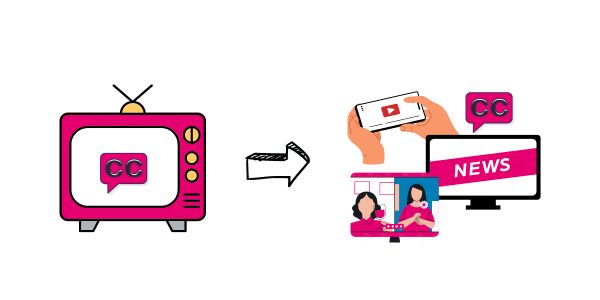
Voice Recognition Software
Voice recognition technology allows individuals with mobility challenges to control computers and software through speech commands.
Voice recognition technology represents a monumental leap in accessibility, especially for individuals with mobility challenges. It offers a gateway to digital independence by enabling them to harness the power of computers and software through the simple, intuitive medium of speech commands. Here’s an exploration of how this transformative technology is changing lives:
1. Empowering Independence: For individuals with limited mobility or dexterity, tasks that many take for granted—such as typing, clicking or navigating menus—can be formidable challenges. Voice recognition technology liberates them from these constraints, allowing them to interact with computers and software independently, fostering a profound sense of empowerment.
2. Seamless Communication: Voice recognition facilitates fluid communication with computers. Users can dictate text for documents, emails and chat messages with remarkable accuracy. This not only saves time but also ensures that their thoughts and ideas are effortlessly translated into written form.
3. Enhanced Accessibility: Beyond text input, voice recognition extends to controlling software and operating systems. Users can open applications, execute commands, browse the web and even navigate complex interfaces, all through vocal instructions. This accessibility extends the digital world’s boundaries for individuals with diverse abilities.
4. Inclusive Work Environments: In professional settings, voice recognition technology fosters inclusive work environments. Employees with mobility challenges can participate more fully in collaborative projects, contribute to discussions and access the same software tools as their peers, leveling the playing field.
5. Multilingual Capabilities: Many voice recognition systems support multiple languages, making it accessible to a global audience. This inclusivity ensures that individuals from various linguistic backgrounds can benefit from the technology, broadening its impact.
6. Assistive Technology Integration: Voice recognition technology seamlessly integrates with other assistive technologies. This synergy can lead to innovative solutions that cater to the specific needs of individuals with disabilities, offering tailor-made support.
7. Accessibility Across Devices: Voice recognition is not confined to desktop computers. It extends to smartphones, tablets and smart speakers. This versatility ensures that users can access information, communicate and control a wide range of devices using their voice.
8. Increased Efficiency: Voice commands often result in faster interactions compared to manual input methods. This efficiency can be especially valuable in time-sensitive scenarios, such as emergencies or critical tasks.
9. Continuous Advancements: The field of voice recognition is continuously advancing. Improvements in accuracy, speed and adaptability are ongoing, promising an even more seamless and intuitive user experience for individuals with mobility challenges.
10. Potential for Customization: Some voice recognition systems offer customization options, allowing users to train the technology to better understand their unique speech patterns and vocabulary. This personalization enhances accuracy and usability.
In conclusion, voice recognition technology stands as a beacon of accessibility, breaking down barriers and facilitating digital inclusion for individuals with mobility challenges. It’s not just a tool for convenience; it’s a catalyst for empowerment, independence and a more inclusive world where everyone, regardless of physical abilities, can participate fully in the digital age. As technology continues to evolve, so too will the opportunities for individuals with disabilities to lead more connected, productive and fulfilling lives.
If you’d like to dive deeper into this subject, there’s more to discover on this page: Diversity, Equity and Inclusion: Key Terms and Definitions
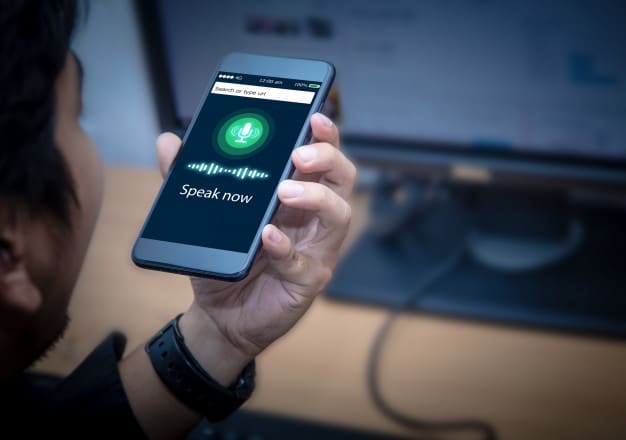
Keyboard Shortcuts and Alternative Input Devices
Customizable keyboard shortcuts and alternative input devices like joysticks or head pointers make it easier for individuals with limited mobility to navigate digital interfaces.
The realm of digital accessibility is continually expanding, with customizable keyboard shortcuts and alternative input devices playing a pivotal role in enhancing the user experience, particularly for individuals with limited mobility. These tools go beyond the conventional keyboard and mouse, offering a more inclusive and accommodating digital environment.
1. Customizable Keyboard Shortcuts: A Tailored Experience
Customizable keyboard shortcuts empower users to tailor their digital interactions according to their unique needs and preferences. This feature is a boon for individuals with limited mobility, as it allows them to bypass complex mouse movements or touch gestures, which can be challenging.
Imagine being able to assign specific actions, like opening applications, switching between tabs or launching commands, to keyboard shortcuts of your choice. For someone with limited mobility, these customized shortcuts can significantly speed up tasks and reduce the physical strain associated with traditional input methods. It’s a way to level the playing field, ensuring that digital interactions are efficient and accessible for everyone.
2. Alternative Input Devices: Expanding Possibilities
While customizable keyboard shortcuts are a great step towards inclusivity, alternative input devices like joysticks, head pointers, sip-and-puff systems or eye-tracking technology take accessibility to the next level. These devices empower individuals with severe motor impairments to navigate digital interfaces with precision and ease.
Joysticks: Joysticks offer fine-grained control, allowing users to move a cursor or navigate through digital content by manipulating the joystick with minimal physical effort.
Head Pointers: A head pointer is a device that tracks the user’s head movements and translates them into on-screen actions. It’s a valuable tool for individuals with limited hand or arm mobility.
Sip-and-Puff Systems: These systems rely on gentle sips and puffs of air to trigger actions on a computer. They are especially helpful for users who have limited control over their limbs.
Eye-Tracking Technology: Advanced eye-tracking systems enable users to control a computer by simply moving their eyes. This technology has revolutionized accessibility for those with severe mobility impairments.
These alternative input devices open up a world of possibilities, enabling individuals to browse the web, communicate, create content and engage in various digital activities that were previously out of reach.
3. Enhanced User Independence and Inclusivity
The significance of customizable keyboard shortcuts and alternative input devices extends far beyond convenience; it’s about fostering independence and inclusivity. These tools empower individuals with limited mobility to interact with technology on their terms, reducing their reliance on others for assistance.
Moreover, they promote a more inclusive society by ensuring that digital platforms, applications and websites are accessible to everyone, regardless of their physical abilities. This inclusivity not only benefits individuals with limited mobility but also enriches the overall user experience for all users, making technology more versatile and accommodating.
In essence, the customizable keyboard shortcuts and alternative input devices represent a significant stride towards creating a digital landscape where everyone, regardless of their physical capabilities, can navigate, create, communicate and participate in the digital world with equal ease and dignity. As technology continues to advance, we can look forward to even more innovative solutions that further bridge the accessibility gap, making digital interfaces truly inclusive for all.
Should you desire more in-depth information, it’s available for your perusal on this page: Introduction to Web Accessibility | Web Accessibility Initiative (WAI …
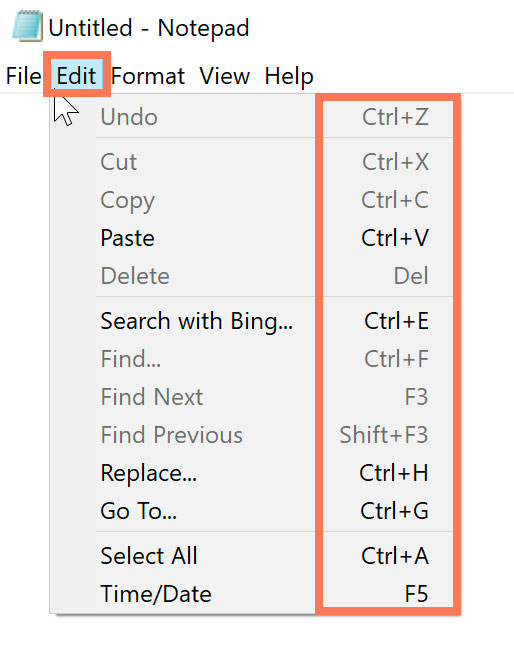
Collaboration and Communication Platforms
Platforms like Slack and Microsoft Teams offer accessibility features such as screen reader compatibility, making real-time communication inclusive for all employees.
Platforms like Slack and Microsoft Teams offer accessibility features such as screen reader compatibility, making real-time communication inclusive for all employees.
1. Screen Reader Integration: Screen readers are essential tools for individuals with visual impairments. These platforms have integrated compatibility with popular screen readers like JAWS, NVDA and VoiceOver. This ensures that employees who rely on screen readers can access and participate in discussions and messages effectively.
2. Keyboard Navigation: Accessibility features extend to keyboard navigation, allowing users to navigate the platform, read messages and send responses without using a mouse. This benefits not only visually impaired users but also those with mobility impairments who may prefer keyboard shortcuts.
3. Alternative Text for Images: Both Slack and Microsoft Teams enable users to add alternative text to images shared within messages. This text description provides context and information about images for screen reader users, enhancing the overall experience.
4. High Contrast Themes: Many individuals with visual impairments or specific preferences benefit from high contrast themes. These platforms offer options for changing the color schemes to improve visibility and readability for users with different needs.
5. Customizable Font Sizes: Users can adjust font sizes and styles to suit their reading preferences. This flexibility accommodates individuals who require larger text or unique font choices for improved readability.
6. Real-Time Transcription: Some video conferencing features in these platforms include real-time transcription services. This not only aids individuals with hearing impairments but also provides a valuable reference for all participants during meetings.
7. Closed Captioning: For video content and recorded meetings, closed captioning features are available. This assists individuals with hearing impairments by providing a text-based representation of spoken content.
8. Voice Commands: Some accessibility features include voice commands and dictation support. This enables users with mobility impairments to control the platform and compose messages using their voice.
9. Accessibility Documentation: Slack and Microsoft Teams offer comprehensive accessibility documentation and guides to help both users and administrators understand how to make the most of these accessibility features.
10. Continuous Improvements: Both platforms prioritize accessibility and are committed to ongoing enhancements based on user feedback and evolving accessibility standards. This ensures that the accessibility features remain up-to-date and effective.
11. Inclusive Culture: By providing these accessibility features, these platforms contribute to fostering an inclusive workplace culture where all employees feel valued and empowered to participate fully in team communication and collaboration.
12. Legal Compliance: Ensuring accessibility aligns with legal requirements such as the Americans with Disabilities Act (ADA) and the Web Content Accessibility Guidelines (WCAG). By offering these features, organizations can mitigate legal risks.
These accessibility features in Slack and Microsoft Teams not only benefit employees with disabilities but also contribute to a more inclusive and diverse work environment. They empower individuals of all abilities to communicate effectively, collaborate seamlessly and participate fully in the digital workplace, ultimately promoting productivity and inclusivity for all.
You can also read more about this here: Benefits and Challenges of Diversity & Inclusion in the Workplace

Flexible Workspace Design
Inclusivity extends to physical office spaces. Adjustable furniture, ergonomic tools and designated quiet areas accommodate diverse workstyles and needs.
Inclusivity in the workplace extends beyond just policies and culture; it encompasses the physical office spaces themselves. Creating an inclusive physical workspace is about recognizing and accommodating the diverse needs and workstyles of employees. Here’s an elaboration on how adjustable furniture, ergonomic tools and designated quiet areas play a crucial role in achieving this goal:
Adjustable Furniture:
Ergonomic Chairs: Inclusivity starts with providing ergonomic chairs that can be customized to support individuals of various body types and comfort preferences. These chairs offer adjustable features like seat height, lumbar support, armrest height and tilt angles, ensuring that everyone can work comfortably and without discomfort.
Height-Adjustable Desks: Sit-stand desks are becoming increasingly popular in inclusive office spaces. These desks can be raised or lowered to accommodate both seated and standing work positions, promoting better posture and reducing the risks associated with prolonged sitting.
Flexible Workspace Layouts: Modular furniture and flexible workspace arrangements allow employees to adapt their surroundings to suit their specific needs and tasks. Whether it’s a collaborative project or focused individual work, adjustable furniture configurations can facilitate it all.
Ergonomic Tools:
Ergonomic Keyboards and Mice: Providing ergonomic keyboards and mice with customizable settings helps prevent repetitive strain injuries. These tools are designed to reduce the strain on wrists and hands, allowing employees to work comfortably for extended periods.
Monitor Arms: Adjustable monitor arms enable users to position their screens at the correct eye level and angle, reducing neck and eye strain. Employees with different height preferences or visual needs can fine-tune their workstations accordingly.
Task Lighting: Adjustable task lighting allows employees to control the brightness and direction of their workspace lighting. This is particularly important for employees who have specific lighting needs due to visual impairments or for tasks that require precise illumination.
Designated Quiet Areas:
Quiet Zones: Recognizing that some tasks require focused concentration, inclusive office spaces include designated quiet areas or private workstations where employees can retreat when they need to work without distractions. These spaces cater to introverts and employees who thrive in solitary work environments.
Wellness Rooms: Inclusivity also extends to the well-being of employees. Providing wellness rooms for relaxation, meditation or nursing mothers ensures that employees have access to spaces that support their physical and emotional needs.
Accessibility Considerations:
Wheelchair Accessibility: Physical inclusivity means ensuring that the office space is wheelchair-accessible. This includes ramps, wide doorways and accessible restrooms to accommodate employees with mobility challenges.
Visual and Auditory Accessibility: Inclusive office spaces consider the needs of employees with visual or hearing impairments. Features like braille signage, captioned videos and well-designed acoustics create a more accessible environment for all.
In conclusion, an inclusive physical office space recognizes that employees are not one-size-fits-all. It embraces diversity in workstyles, physical abilities and personal needs. By providing adjustable furniture, ergonomic tools and designated quiet areas, organizations foster an environment where every employee can thrive, be comfortable and perform at their best. This commitment to inclusivity not only enhances employee satisfaction and well-being but also promotes productivity and creativity across the board.
Explore this link for a more extensive examination of the topic: Managing Flexible Work Arrangements

Training and Awareness Programs
Employee training and awareness programs promote inclusivity by educating staff about different abilities and the importance of accommodating diverse needs.
Employee training and awareness programs play a pivotal role in fostering a workplace culture that not only recognizes but truly celebrates diversity and inclusivity. Here’s how these programs go beyond the surface to create an environment where every employee feels valued and supported:
Understanding Different Abilities: These programs go beyond just acknowledging differences. They delve deep into the various abilities, whether physical, cognitive or sensory, that employees might have. This understanding breaks down stereotypes and misconceptions, promoting empathy and respect.
Creating Empathy: By sharing stories and experiences of individuals with diverse abilities, training programs evoke empathy among employees. This emotional connection encourages a shift from merely tolerating differences to actively embracing and supporting them.
Legal and Ethical Awareness: Training programs highlight the legal and ethical aspects of inclusivity. Employees learn about anti-discrimination laws and regulations, emphasizing the organization’s commitment to providing an equitable workplace.
Importance of Accommodation: These programs stress the significance of accommodating diverse needs. Employees discover how seemingly small adjustments in the workplace environment or processes can make a world of difference for their colleagues with different abilities.
Communication and Language: Effective communication is essential in an inclusive environment. Training programs educate staff on the importance of using respectful and inclusive language, ensuring that no one feels marginalized or excluded.
Accessibility Awareness: In an increasingly digital world, accessibility is crucial. Employee training includes information on creating accessible digital content, making websites, documents and presentations inclusive for all.
Mental Health and Well-being: Inclusivity programs also encompass mental health awareness. They teach employees how to recognize signs of mental health challenges and provide guidance on offering support and resources to colleagues in need.
Leadership and Role Modeling: Training extends to leadership, emphasizing the role of managers and supervisors in setting an inclusive tone. Managers learn how to lead by example and create an environment where all team members can thrive.
Continuous Learning: Inclusivity is not a one-time effort; it’s an ongoing journey. These programs encourage employees to continuously educate themselves about diversity and inclusivity, staying up-to-date with best practices and evolving norms.
Inclusive Hiring and Promotion: Beyond awareness, training programs address inclusive hiring and promotion practices. They equip HR departments and managers with the tools and knowledge to ensure fair opportunities for all employees, regardless of their abilities.
Feedback Mechanisms: Inclusivity programs often establish feedback mechanisms, providing a platform for employees to share concerns, suggestions or experiences related to inclusivity. This fosters a culture of openness and continuous improvement.
Celebrating Differences: Ultimately, these programs promote the idea that diversity isn’t just something to accommodate; it’s something to celebrate. They encourage employees to embrace the unique perspectives and talents that individuals with diverse abilities bring to the workplace.
In summary, employee training and awareness programs are the foundation upon which inclusive workplaces are built. They not only educate but also inspire, transforming attitudes and behaviors and creating environments where every employee can thrive, regardless of their abilities. Through these programs, organizations send a powerful message that diversity isn’t a challenge to overcome; it’s a strength to embrace.
Should you desire more in-depth information, it’s available for your perusal on this page: Diversity, Equity and Inclusion: Key Terms and Definitions

Mental Health Support Tools
Mental health and well-being apps and resources, like meditation and stress management apps, foster a more inclusive environment for employees facing mental health challenges.
The incorporation of mental health and well-being apps and resources into the workplace signifies a significant step towards creating a more inclusive and supportive environment for employees dealing with mental health challenges. Here’s an in-depth exploration of how these resources contribute to a holistic approach to employee well-being:
1. Promoting Awareness and Reducing Stigma: The presence of mental health apps and resources in the workplace sends a clear message that mental health matters and that seeking help is encouraged and normalized. This proactive approach contributes to reducing the stigma associated with mental health issues, making it easier for employees to discuss their challenges openly.
2. Accessible Support 24/7: Mental health apps provide employees with round-the-clock access to tools and resources. Whether it’s managing stress, practicing mindfulness or seeking guidance, these apps are available whenever employees need them. This accessibility ensures that support is not limited to office hours.
3. Personalized Solutions: Many mental health apps offer personalized content and exercises based on an individual’s specific needs and preferences. Employees can tailor their well-being journey to address their unique challenges, making the resources more effective and relevant.
4. Stress Reduction: Stress is a common challenge in the modern workplace. Stress management apps provide techniques and exercises to help employees cope with stress, relax and maintain a healthy work-life balance. By reducing stress, these resources contribute to improved overall well-being and job satisfaction.
5. Enhancing Resilience: Mental health resources often focus on building resilience. They teach employees how to bounce back from setbacks, manage adversity and develop emotional strength. This resilience is a valuable asset not only in the workplace but also in everyday life.
6. Improved Focus and Productivity: Employees who prioritize their mental well-being tend to experience improved focus and productivity. Meditation and mindfulness apps, for example, help individuals stay present and reduce distractions, which can lead to higher efficiency and better work outcomes.
7. Reducing Absenteeism and Presenteeism: Mental health challenges can lead to absenteeism (missing work) and presenteeism (being at work but not fully productive). By providing resources that support mental health, organizations can reduce these issues, ultimately benefiting both employees and the company’s bottom line.
8. Supporting Remote and Distributed Teams: With the rise of remote and distributed workforces, mental health apps offer valuable support to employees who may not have access to in-person resources. These tools bridge the gap and ensure that remote team members receive the same level of support.
9. Data-Driven Insights: Some mental health apps collect data on user well-being and usage patterns. Organizations can use this anonymized data to gain insights into employee well-being trends and make informed decisions about additional support or initiatives.
10. Employee Engagement and Retention: An inclusive well-being program that includes mental health resources can boost employee engagement and retention. Employees feel valued when their mental health is prioritized, which can lead to greater job satisfaction and loyalty.
In conclusion, the integration of mental health and well-being apps and resources into the workplace is a proactive step towards creating a more supportive and inclusive environment. By promoting awareness, providing accessible support and offering personalized solutions, organizations not only enhance the well-being of their employees but also cultivate a positive and productive workplace culture. The result is a win-win situation where employees thrive and organizations benefit from increased productivity and employee loyalty.
Should you desire more in-depth information, it’s available for your perusal on this page: Cultural Diversity and Mental Health: Considerations for Policy and …

Diversity and Inclusion Software
Specialized software can help organizations track diversity metrics, plan inclusivity initiatives and ensure that inclusive practices are embedded in company culture.
“In today’s evolving corporate landscape, specialized software emerges as a critical catalyst in driving diversity and inclusivity initiatives within organizations. It serves as a multifaceted tool that empowers businesses to track diversity metrics, strategize inclusivity initiatives and firmly embed inclusive practices into the very fabric of their company culture.
1. Tracking Diversity Metrics: Specialized software provides a structured framework for collecting, analyzing and visualizing diversity metrics. It allows organizations to monitor the composition of their workforce, capturing data related to gender, race, age, ethnicity and other vital demographic factors. By generating comprehensive reports and visual representations, businesses gain insights into their current diversity landscape.
2. Inclusivity Planning: The software acts as a planning hub for inclusivity initiatives. Organizations can use it to set actionable goals, establish timelines and allocate resources for fostering a more inclusive workplace. The ability to create customized action plans tailored to the unique needs of the organization is a significant advantage.
3. Data-Driven Decision-Making: Armed with detailed diversity data, decision-makers can make informed choices that drive inclusivity. Software facilitates evidence-based decision-making, ensuring that initiatives are rooted in accurate information rather than assumptions.
4. Monitoring Progress: Specialized tools enable organizations to continuously monitor and assess the progress of their inclusivity efforts. They can track key performance indicators, measure the impact of initiatives and make real-time adjustments to stay on course.
5. Employee Engagement: These tools often include features for gathering feedback from employees. Employee surveys and sentiment analysis help gauge the effectiveness of inclusivity programs, identify areas for improvement and ensure that employees’ voices are heard.
6. Compliance and Reporting: In many industries, there are legal and regulatory requirements related to diversity and inclusivity reporting. Specialized software simplifies compliance by automating the creation of reports that align with these mandates.
7. Cultural Integration: Beyond numbers and statistics, software fosters the integration of inclusive practices into the organization’s culture. It can disseminate training materials, promote awareness campaigns and facilitate ongoing communication to nurture a more inclusive ethos.
8. Accountability and Transparency: Transparent reporting through software holds organizations accountable for their diversity and inclusivity commitments. It enables stakeholders, including employees and customers, to assess the organization’s progress and adherence to stated goals.
9. Improved Recruitment: By analyzing data on diversity, organizations can refine their recruitment strategies to attract a broader and more diverse talent pool. This, in turn, enriches the organization with fresh perspectives and experiences.
10. Competitive Advantage: Companies that champion diversity and inclusivity are often more attractive to talent, clients and investors. Specialized software helps organizations leverage these qualities as a competitive advantage in a global marketplace.
11. Cultural Transformation: Over time, consistent use of specialized software contributes to a cultural transformation where diversity and inclusivity are not merely programs but integral aspects of the company’s identity and values.
In essence, specialized software acts as a compass, guiding organizations on their journey toward a more diverse and inclusive future. It empowers them to turn aspirations into action, fostering a workplace where every individual is not only welcomed but also valued, contributing to a more innovative, productive and harmonious environment.”
Should you desire more in-depth information, it’s available for your perusal on this page: Diversity, Equity and Inclusion Glossary | College of the Environment
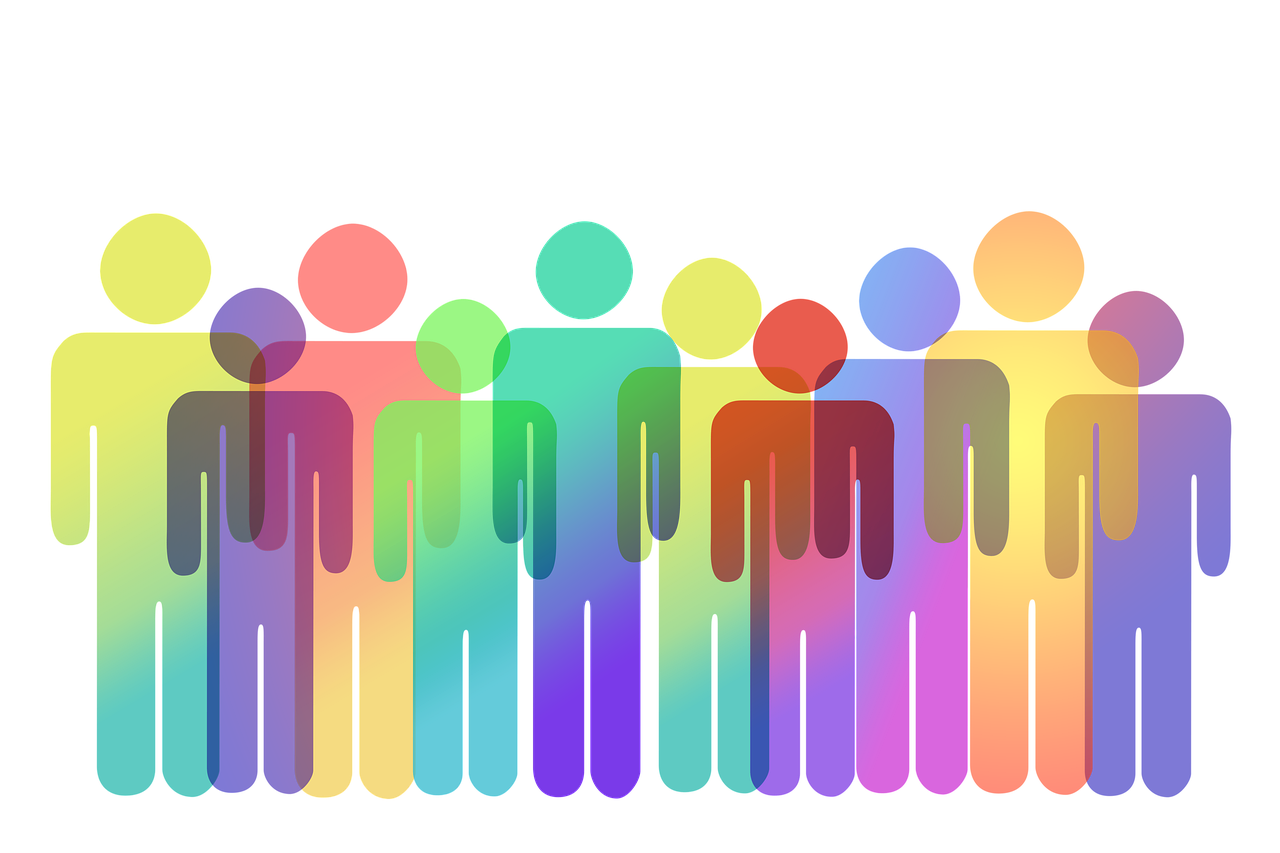
The Future of Accessibility and Inclusivity
As technology continues to advance, so too will the tools and solutions available to create accessible and inclusive office environments. We can anticipate:
As technology continues to advance, the trajectory of innovation is poised to transform office environments into even more accessible and inclusive spaces. Here’s a glimpse into what we can anticipate:
1. Enhanced Assistive Technologies: The ongoing development of assistive technologies will play a pivotal role in making workplaces more inclusive. Expect to see more sophisticated screen readers, voice-activated assistants and wearable devices that cater to diverse needs and abilities.
2. Seamless Integration of Accessibility Features: Accessibility features that were once add-ons or optional settings will become seamlessly integrated into mainstream software and hardware. This means that creating accessible documents, presentations and websites will become standard practice, benefiting all users.
3. AI-Powered Accessibility Solutions: Artificial intelligence will revolutionize accessibility solutions. AI can dynamically adapt content to suit individual needs, making information more accessible for people with disabilities. For example, it can generate image descriptions, provide real-time language translation or offer personalized navigation guidance.
4. Universal Design Principles: Universal design principles will gain prominence in office spaces. The concept of designing workplaces, tools and technologies that are inherently inclusive will become the norm. This will lead to more ergonomic furniture, intuitive user interfaces and flexible workspaces that cater to a wide range of abilities and preferences.
5. Inclusive Communication Platforms: Communication platforms will evolve to accommodate diverse communication styles. This includes better support for sign language, real-time captioning and alternative communication methods for individuals with speech or hearing impairments.
6. Smart Office Environments: Smart office environments will become more attuned to individual needs. AI-driven systems can adjust lighting, temperature and workspace layout based on user preferences and requirements, ensuring that every employee has a comfortable and productive workspace.
7. Digital Accessibility Standards: As technology evolves, so will digital accessibility standards. Governments and organizations will continue to refine and enforce accessibility regulations, ensuring that digital products and services adhere to the highest standards of inclusivity.
8. Collaboration Across Industries: The push for accessibility and inclusivity will foster collaboration across industries. Tech companies, disability advocacy groups and government bodies will work together to share best practices, develop innovative solutions and promote awareness.
9. Accessibility Training: Accessible technology is only effective when users know how to leverage it. Expect to see increased emphasis on accessibility training for employees, ensuring that they can make the most of available tools and technologies.
10. Empowerment and Inclusion: Ultimately, the ongoing advancement of technology aims to empower individuals of all abilities, fostering a culture of inclusion and diversity. A workplace that values and prioritizes accessibility benefits not only its employees but also its bottom line through enhanced innovation and a broader talent pool.
In summary, the future of accessible and inclusive office environments is bright and promising. Technological advancements will continue to break down barriers, creating workplaces where everyone can contribute their best, regardless of their abilities or challenges. This evolution represents not just a technological shift but a cultural transformation that underscores the importance of inclusivity in the modern workplace.
Explore this link for a more extensive examination of the topic: Inclusion, diversity, equity and accessibility in the built environment …

AI-Powered Accessibility
AI will play a more prominent role in providing real-time accessibility solutions, such as automated captioning and content optimization.
The integration of AI into real-time accessibility solutions is poised to revolutionize how individuals interact with digital content. Here’s a deeper exploration of the transformative role AI will play in delivering enhanced accessibility:
Automated Captioning: AI-driven automated captioning is a game-changer for individuals with hearing impairments and those who prefer to consume content with captions. AI algorithms can accurately transcribe spoken words in real-time, ensuring that video and audio content are more accessible. This not only benefits deaf and hard-of-hearing individuals but also improves comprehension for all viewers in noisy or quiet environments.
Content Optimization: AI algorithms are adept at optimizing content for different accessibility needs. For example, they can reformat text to make it more readable for individuals with dyslexia, adjust color contrasts for those with visual impairments or even translate content into multiple languages to cater to a diverse audience. These optimizations create a more inclusive digital experience.
Personalized Accessibility: AI’s ability to learn and adapt means that accessibility solutions can become highly personalized. The technology can recognize individual preferences and accessibility requirements, adjusting content in real-time to cater to those needs. This level of personalization ensures that each user has an optimal and comfortable experience.
Voice Commands and Control: AI-powered voice recognition technology is making it easier for individuals with mobility impairments to navigate digital interfaces. Voice commands allow users to control devices and access content without the need for physical input devices. This not only enhances accessibility but also promotes independence and autonomy.
Real-Time Language Translation: AI-driven translation tools can provide real-time language translation for spoken content, making digital meetings, conferences and presentations more accessible to a global audience. Language barriers are no longer an impediment to participation and understanding.
Enhanced Image Recognition: AI-based image recognition technologies can provide real-time descriptions of visual content for individuals with visual impairments. This includes identifying objects, people and scenes, enabling a richer understanding of images and videos.
Content Summarization: AI can analyze and summarize lengthy written content in real-time, making it more digestible for individuals with cognitive impairments or those who prefer concise information. This enhances accessibility and comprehension, particularly for complex documents.
Automatic Sign Language Interpretation: AI-driven sign language interpretation can bridge the communication gap between hearing-impaired individuals and the broader community. Real-time sign language interpretation services are becoming more accurate and widely available, fostering inclusivity.
Synchronized Multimodal Experiences: AI can synchronize multiple modalities of content (text, audio, video, etc.) in real-time, allowing users to seamlessly switch between them. This flexibility is beneficial for individuals with diverse accessibility needs, ensuring that content is presented in a format that suits them best.
Continuous Improvement: AI’s learning capabilities mean that accessibility solutions can continuously improve. The more data AI algorithms process, the better they become at providing accurate and effective accessibility features, ensuring a constantly evolving and refined user experience.
In summary, AI’s increasing role in real-time accessibility solutions is a testament to its potential to break down digital barriers and promote inclusivity. As these technologies become more advanced and widespread, they will empower individuals of all abilities to engage with digital content, participate in online interactions and access information in ways that were previously unimaginable. AI-driven accessibility is not just about improving access; it’s about transforming the digital landscape into a space where everyone can participate fully and equally.
Explore this link for a more extensive examination of the topic: Department of Defense Diversity, Equity, Inclusion, and Accessibility …
Virtual Reality for Training
VR technology will enable immersive diversity and inclusion training, fostering empathy and understanding among employees.
VR technology will enable immersive diversity and inclusion training, fostering empathy and understanding among employees in ways that were previously unimaginable.
Real-World Simulations: VR can create realistic, immersive scenarios that mimic real-world situations, allowing employees to step into the shoes of others. For diversity and inclusion training, this means that learners can experience firsthand what it’s like to face different challenges related to race, gender, disability or other factors. This immersive experience can build empathy and a deeper understanding of the daily struggles and perspectives of their colleagues.
Safe Learning Environment: VR provides a safe and controlled environment for diversity and inclusion training. Employees can make mistakes, ask questions and engage in discussions without fear of judgment. This promotes open dialogue and allows individuals to learn from their experiences in a risk-free setting, ultimately leading to more inclusive behaviors in the workplace.
Engaging and Memorable: Traditional diversity training can sometimes be seen as boring or didactic. VR training, on the other hand, is engaging and memorable. It captures the attention of learners and leaves a lasting impact. Employees are more likely to remember and apply the lessons learned in VR, making it a highly effective tool for promoting diversity and inclusion.
Measurable Results: VR training platforms can track and measure employees’ progress and reactions during the training sessions. This data can provide valuable insights into areas where individuals may need additional support or where the training program itself can be improved. It allows organizations to gauge the effectiveness of their diversity and inclusion initiatives more accurately.
Accessibility: VR training can be designed to be accessible to a wide range of employees, including those with disabilities. It can provide options for customization to suit individual learning needs and preferences, ensuring that everyone can participate fully in diversity and inclusion training.
Cultural Competence: VR can be used to enhance cultural competence by exposing employees to different cultural contexts and perspectives. It can help break down stereotypes and biases by immersing learners in diverse cultural environments, encouraging them to appreciate and respect differences.
Global Collaboration: In an increasingly globalized world, VR can facilitate global collaboration and understanding. Employees from different parts of the world can come together in virtual spaces to discuss diversity and inclusion topics, share their experiences and learn from each other’s perspectives.
Continuous Learning: VR technology enables continuous learning and reinforcement of diversity and inclusion principles. Employees can revisit VR scenarios and experiences whenever they need a refresher or encounter a new situation in the workplace that requires them to apply what they’ve learned.
In summary, VR technology is poised to revolutionize diversity and inclusion training by creating immersive, engaging and effective learning experiences. It has the potential to foster empathy, understanding and a more inclusive workplace culture, ultimately benefiting employees and organizations alike.
Additionally, you can find further information on this topic by visiting this page: Developing Employees

Enhanced Assistive Devices
Assistive technologies will become even more sophisticated, offering seamless integration with digital tools and services.
Anticipate a future where assistive technologies reach unprecedented levels of sophistication, seamlessly intertwining with an extensive array of digital tools and services. The synergy between assistive technologies and the digital landscape will empower individuals, making tasks more accessible, efficient and user-friendly. Through continuous advancements and integration, these technologies will play an instrumental role in fostering an inclusive and enhanced user experience across various domains. Embrace the evolution of assistive technologies as they revolutionize the way we interact with and leverage digital advancements, promising a more inclusive and accessible digital future.
To expand your knowledge on this subject, make sure to read on at this location: Guiding Principles for Use of Technology with Early Learners – Office …

Global Collaboration
Organizations will collaborate globally to share best practices and develop universal accessibility and inclusivity standards.
“In an increasingly interconnected world, organizations recognize the need to collaborate on a global scale to drive positive change and progress. One of the key areas where this collaboration is making a significant impact is in the pursuit of universal accessibility and inclusivity standards.
Knowledge Sharing: Organizations are opening their doors to share their experiences and best practices in creating accessible and inclusive environments. This knowledge exchange extends across industries, as diverse sectors can offer valuable insights into different aspects of accessibility. For example, technology companies might share innovations in assistive technology, while architecture firms can contribute expertise in creating physically accessible spaces.
Global Impact: The collaboration doesn’t stop at regional or industry boundaries. It’s a global effort that recognizes the universal nature of accessibility and inclusivity. Organizations are partnering with counterparts from different countries and regions, acknowledging that the challenges and solutions are often similar, regardless of geographic location.
Standards Development: These collaborative efforts are instrumental in the development of universal standards for accessibility and inclusivity. By pooling their resources and expertise, organizations can define and refine standards that ensure equitable access to services, products and environments for people of all abilities.
Innovation Acceleration: Collaboration fosters innovation. By working together, organizations can accelerate the development of new technologies, products and services that enhance accessibility. This innovation isn’t limited to a single field but extends across a wide spectrum, from transportation and healthcare to digital platforms and education.
Advocacy and Awareness: Collaborative efforts also extend to advocacy and awareness campaigns. Organizations are joining forces to raise awareness about the importance of accessibility and inclusivity, not only among their peers but also within society at large. These campaigns aim to create a cultural shift towards greater acceptance and understanding of diversity.
Policy Influence: Collective action carries significant weight in influencing policies and regulations. Organizations are leveraging their collaborative networks to advocate for inclusive policies at local, national and international levels. This includes advocating for accessible transportation, workplace accommodations and digital accessibility standards.
Feedback Loops: Collaboration creates ongoing feedback loops that help organizations continuously improve their accessibility efforts. By receiving input and insights from a diverse range of stakeholders, including individuals with disabilities, organizations can fine-tune their approaches and ensure they meet the evolving needs of the community.
Economic and Social Impact: Ultimately, these collaborative endeavors have both economic and social implications. They promote equal opportunities, foster innovation-driven economies and contribute to a more inclusive and compassionate society where everyone can participate fully, regardless of their abilities.
In summary, the collaboration of organizations on a global scale to establish universal accessibility and inclusivity standards is a testament to the power of collective action. It’s a shared commitment to creating a world where barriers are dismantled, opportunities are expanded and diversity is celebrated. As organizations continue to collaborate, the path toward a more accessible and inclusive future becomes clearer and more attainable.”
To expand your knowledge on this subject, make sure to read on at this location: How to promote diversity, equity, and inclusion in the workplace
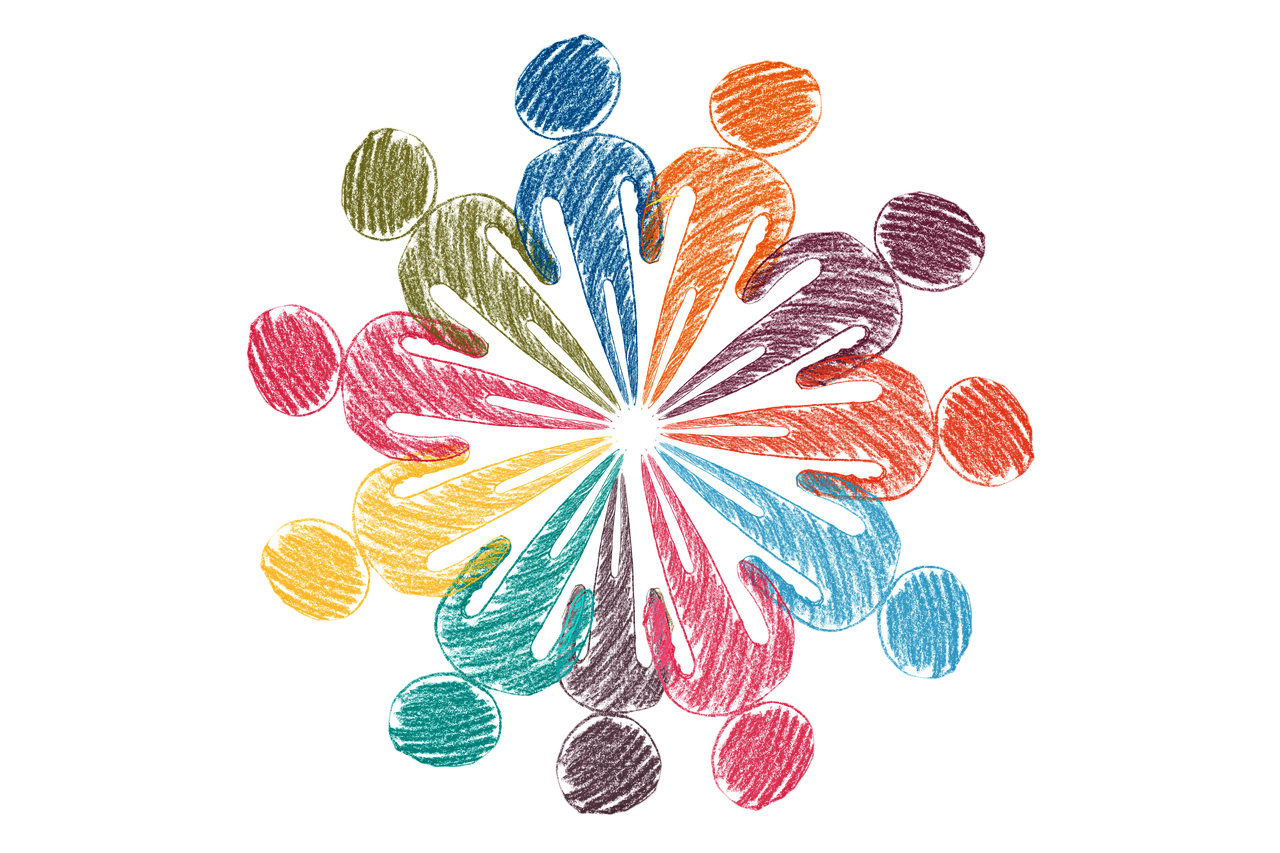
In conclusion, accessibility and inclusivity are not just ideals; they are integral to the success and well-being of any organization. By embracing a diverse workforce and leveraging the tools and technologies available, businesses can create a welcoming and inclusive office environment where every employee can thrive and contribute their unique talents and perspectives. The journey towards a more accessible and inclusive workplace is an ongoing commitment—one that fosters innovation, empowers employees and strengthens the core values of the organization.
In summary, it’s crucial to recognize that accessibility and inclusivity transcend the status of mere ideals; they are the very foundation upon which successful and harmonious organizations are built. The world is evolving and so are the expectations of employees, customers and stakeholders. In this ever-changing landscape, businesses must actively embrace the principles of diversity, equity and inclusion, not as optional pursuits but as central elements of their core values.
A diverse workforce, characterized by individuals from various backgrounds, abilities and experiences, is a source of strength and resilience. It fosters a dynamic synergy where different viewpoints intersect, leading to innovative solutions and creative problem-solving. Each employee brings a unique set of talents and perspectives to the table, enriching the collective knowledge and creativity of the organization.
To translate these ideals into reality, organizations can harness the remarkable tools and technologies at their disposal. From adaptive software and assistive devices that empower employees with disabilities to accessible web design and inclusive workplace apps, technology plays a pivotal role in bridging gaps and ensuring that every individual can contribute fully.
Moreover, the journey toward a more accessible and inclusive workplace is not a destination but an ongoing commitment. It’s a path that requires continual learning, adaptability and a willingness to challenge the status quo. Organizations that embrace this commitment empower their employees to be their authentic selves, creating a workplace culture that values individuality, fosters mutual respect and prioritizes fairness.
As organizations evolve and adapt to changing societal norms and expectations, they discover that fostering accessibility and inclusivity is not just a moral imperative but a strategic advantage. It positions them as employers of choice, attracts top talent, enhances innovation, strengthens employee engagement and ultimately contributes to long-term success.
In closing, accessibility and inclusivity are not abstract ideals; they are tangible forces that shape the character and future of organizations. By championing diversity and leveraging the tools available, businesses can create a welcoming and inclusive office environment where every employee is empowered to thrive and contribute. This journey is not just a corporate responsibility; it’s a pathway to unlocking the full potential of individuals and realizing the true potential of the organization itself. It’s a commitment that breathes life into core values, fosters innovation and sets the stage for a brighter, more inclusive future.
Don’t stop here; you can continue your exploration by following this link for more details: Universal Design: Process, Principles, and Applications | DO-IT
More links
If you’d like to dive deeper into this subject, there’s more to discover on this page: The City of Philadelphia’s New Workforce Diversity Dashboard …
